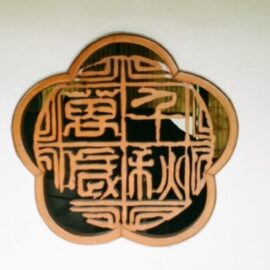
What does pleasure have to do with social justice? How can finding joy transform activism from draining to sustaining?
In her book Pleasure Activism, adrienne maree brown explores how embracing pleasure can revolutionize social justice work. She argues that joy and satisfaction are not just personal indulgences—they’re essential tools for creating lasting change.
Continue reading for several Pleasure Activism quotes that shed light on brown’s ideas about pleasure, boundaries, relationships, and the path to sustainable activism.
Pleasure Activism Quotes
In a world where activism often leads to burnout and justice work is frequently associated with sacrifice, adrienne maree brown argues that social justice work can—and should—be rooted in joy and satisfaction. Pleasure Activism is a collection of essays, interviews, and conversations that explores the transformative power of pleasure—both as a path to personal healing and a catalyst for social change. brown examines what genuine pleasure means and how embracing it can transform your approach to activism from one of struggle and sacrifice to one that centers joy and fulfillment.
These Pleasure Activism quotes, along with some context and explanation, will give you a good sense of the book.
“Pleasure is the point. Feeling food is not frivolous; it is freedom.”
brown defines pleasure activism as the effort to reclaim our whole and most joyful selves in the face of oppression. She sees pleasure as our birthright and a basic human need. Further, she argues that feeling pleasure helps us feel psychologically whole and allows us to build the mutual trust necessary to work together for broad social change.
brown argues that working for justice should feel good. Sustainable activism balances the hard work of change with genuine delight. Instead of burning out from constant struggle, we can bring joy to justice movements by centering pleasure—through shared meals, music, art, and celebration—making the path to social change one that replenishes rather than depletes.
“Your no makes the way for your yes. Boundaries create the container within which your yes is authentic. Being able to say no makes yes a choice.”
brown argues that the foundation of any fulfilling relationship, whether monogamous or nonmonogamous, lies in open communication about desires and boundaries that help everyone feel emotionally and physically fulfilled. By openly communicating our needs and limits—such as “I need quiet time after gatherings” or “I prefer handshakes to hugs”—we help create the trust and safety needed for genuine connection. When everyone’s boundaries are respected, pleasure becomes both ethical and sustainable rather than extractive or harmful. Clear boundaries allow us to experience deeper pleasure in our interactions, as we can fully relax and be present without fear of overextension.
(Shortform note: Setting clear boundaries stands in contrast to performative “niceness,” which often involves suppressing your own needs and desires. In Not Nice, Aziz Gazipura argues that it’s challenging for many people to set these types of boundaries because they’ve internalized the belief that prioritizing others’ needs is virtuous while protecting their own well-being is selfish. This pattern of self-sacrifice actually diminishes your capacity for genuine pleasure and connection because you’re too depleted or resentful. True pleasure activism requires you to move beyond “being nice” to embrace authentic kindness, which honors your own and others’ boundaries.)
Specifically, brown argues that boundaries are vital for liberated relationships. She introduces the concept of generative boundaries—dynamic agreements that encourage growth and connection. While traditional boundaries can feel like rules that are set in stone, generative boundaries are intended to evolve through open discussion of people’s underlying needs. For example, instead of saying “no texting exes,” partners might explore what makes this behavior feel threatening and create flexible agreements around transparency and purpose. In this way, boundaries become opportunities for building trust and understanding, while still protecting what matters to both people.
(Shortform note: brown’s framework represents a theoretical evolution in how we understand boundaries. While traditional boundary theorists such as Murray Bowen emphasized boundaries primarily as tools for psychological protection and differentiation between self and others, brown builds on somatic therapist Prentis Hemphill’s more nuanced definition of boundaries as “the distance at which I can love you and me simultaneously.” Both brown and Hemphill suggest that the “distance” varies contextually and can be renegotiated as relationships, circumstances, and individual capacities change over time.)
“I touch my own skin, and it tells me that before there was any harm, there was miracle.”
Pleasure activism offers an alternative path to reconnect to your body and reclaim your bodily autonomy by encouraging you to pay attention to what genuinely nourishes and energizes you, rather than following external rules about how you should feel or what you should want.
According to brown, reconnecting to your body has broader implications for social justice. As Sonya Renee Taylor argues in The Body Is Not an Apology, injustice often stems from people’s inability to accept and love their and others’ bodies. Taylor explains that, when people reject their own bodies, they often project their shame onto others, perpetuating discriminatory attitudes and behaviors. This exacerbates people’s insecurities, which media and advertising industries capitalize on through shame-based marketing campaigns. Through this lens, embracing bodily pleasure is an act of resistance against the interconnected systems of oppression that perpetuate and profit from body shame.
brown also recommends somatic practices, which help you integrate your body and mind through mindful movement, breathwork, and focused attention to subtle physical sensations such as muscle tension, temperature changes, and weight distribution. The goal of somatic work is to develop heightened awareness of how you experience your body from the inside out. By consciously attending to physical sensations, somatics helps you become more aware of your body’s signals and responses. This awareness can help reveal where trauma is stored in the body and build your capacity to stay present with discomfort.
“I believe that all organizing is science fiction – that we are shaping the future we long for and have not yet experienced.”
One influence on pleasure activism is science fiction novelist Octavia Butler, who portrayed pleasure and symbiosis as vital for survival. For example, in her short story “Bloodchild,” the human protagonist’s intimate bond with an alien species ensures both species’ survival. brown argues Butler’s work reimagines pleasure—instead of a frivolous personal indulgence, Butler highlights its role in building sustainable, equitable communities that promote collective well-being.
| Butler’s Complex Portrayal of Pleasure Some may disagree with brown’s analysis of the role of pleasure in “Bloodchild.” Although Butler herself saw “Bloodchild” as a love story that celebrates symbiotic connection, others see it more ambiguously and suggest it raises questions about the link between pleasure, power, and abuse. In the story, the alien species control vital resources and protect humans, and humans must serve as hosts for alien larvae. This system of reproduction is fundamentally coercive, according to some readings of the story. However, the human protagonist, Gan, experiences genuinely pleasurable physical and emotional intimacy with T’Gatoi, the alien who both protects and impregnates him. This complicates their relationship, as T’Gatoi offers comfort and care while also asserting control over Gan’s body and future. The relationship between Gan and T’Gatoi demonstrates how pleasure can sometimes function in contradictory ways—for example, it can be a source of connection and a means of control at the same time. This may complicate brown’s reading of Butler. Although brown says Butler highlights pleasure’s role in facilitating collective well-being, some might question how healthy a community that relies on such power imbalances can be. |
“Liberated relationships are one of the ways we actually create abundant justice, the understanding that there is enough attention, care, resource, and connection for all of us to access belonging, to be in our dignity, and to be safe in community.”
According to brown, pleasure activism changes how we relate to each other by encouraging relationships rooted in honesty, mutual freedom, and shared joy, rather than obligation. When we follow pleasure activist principles, she argues, our relationships become sources of empowerment where we define our connections based on what brings us authentic happiness, rather than patterning our relationships around social norms that may not fit.
brown advocates the idea of “liberated relationships,” which discourage possessiveness and focus on the freedom and transformation of everyone involved, whether the relationship be romantic or platonic.
She argues that the foundation of any fulfilling relationship, whether monogamous or nonmonogamous, lies in open communication about desires and boundaries that help everyone feel emotionally and physically fulfilled.






